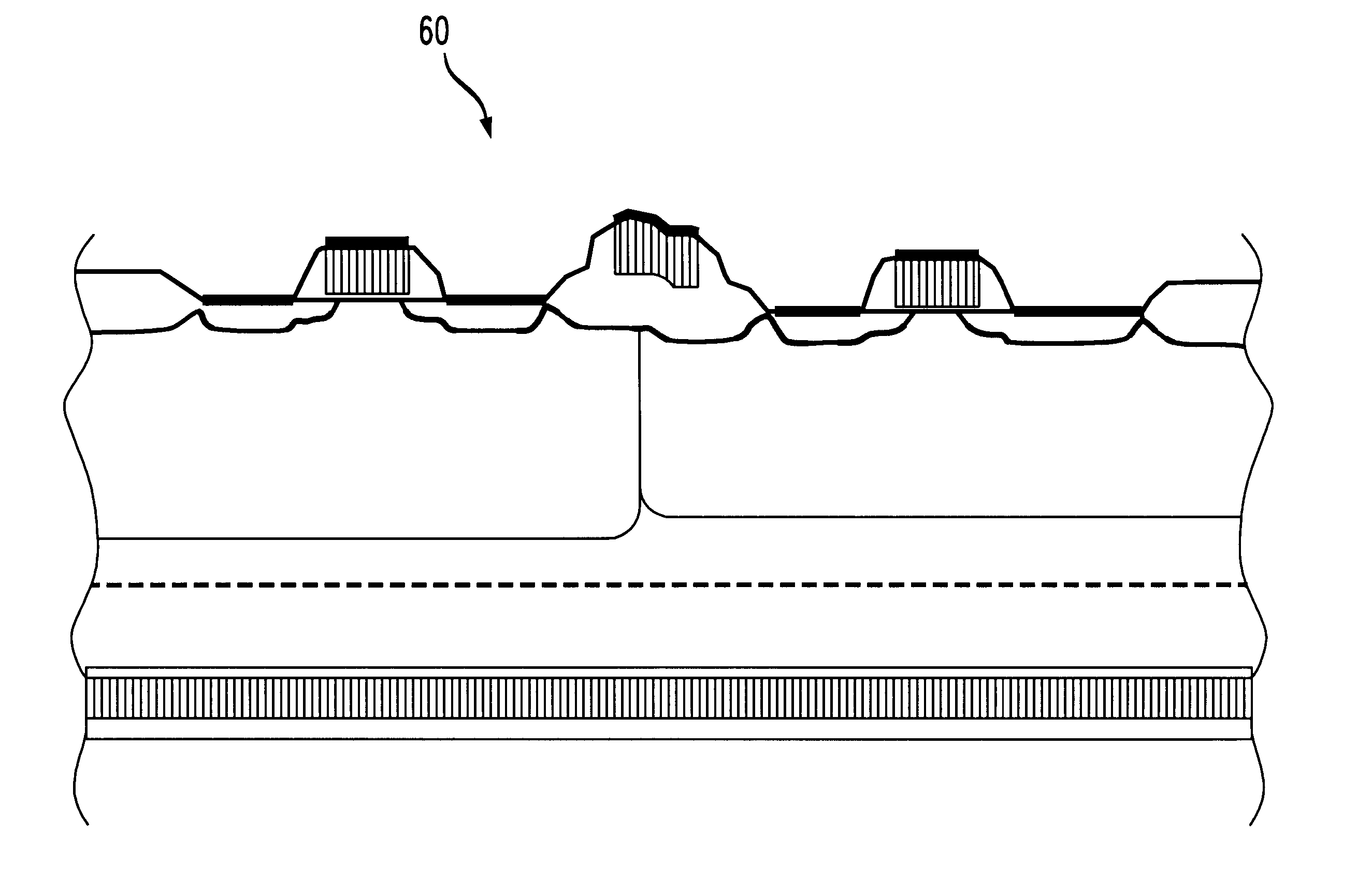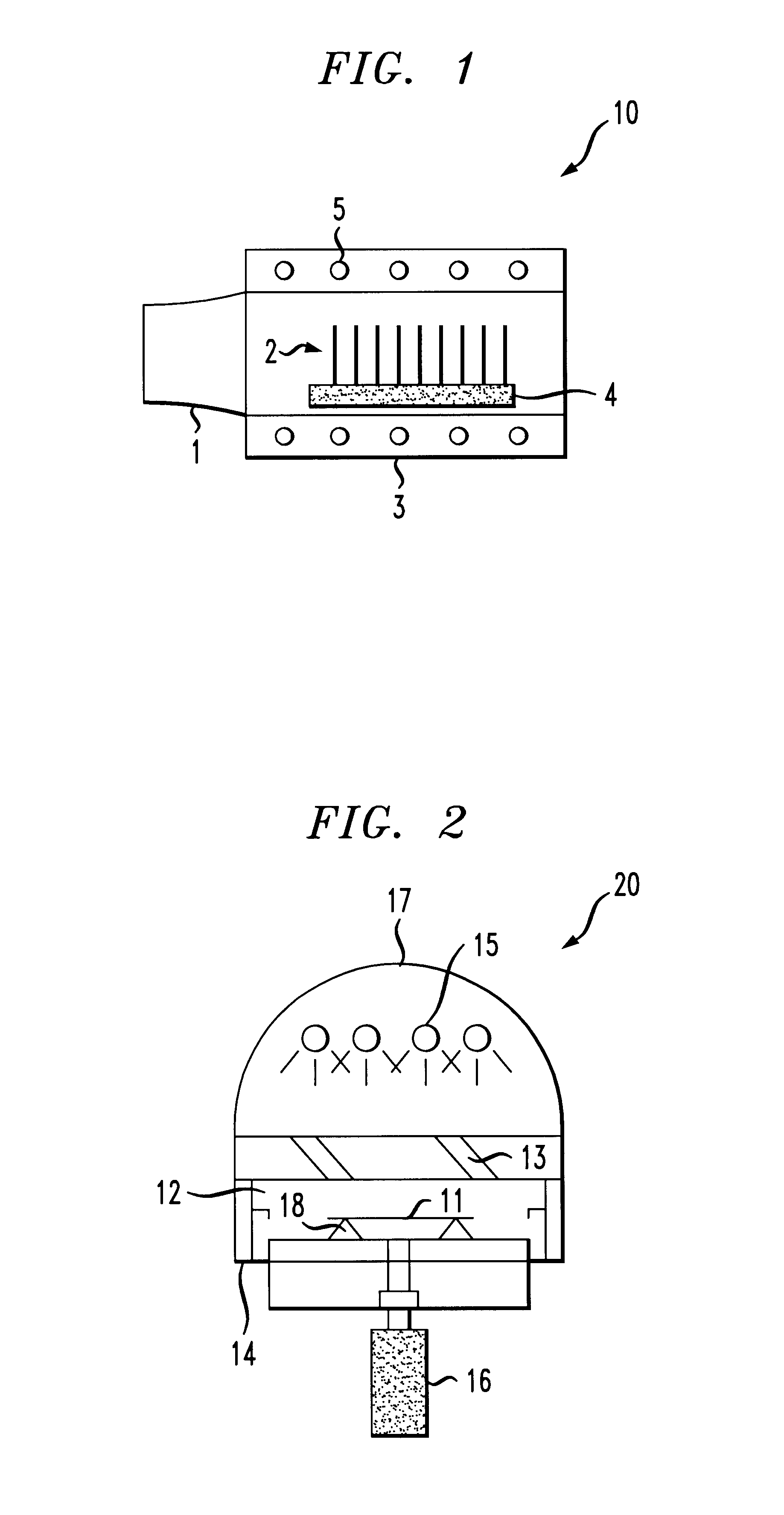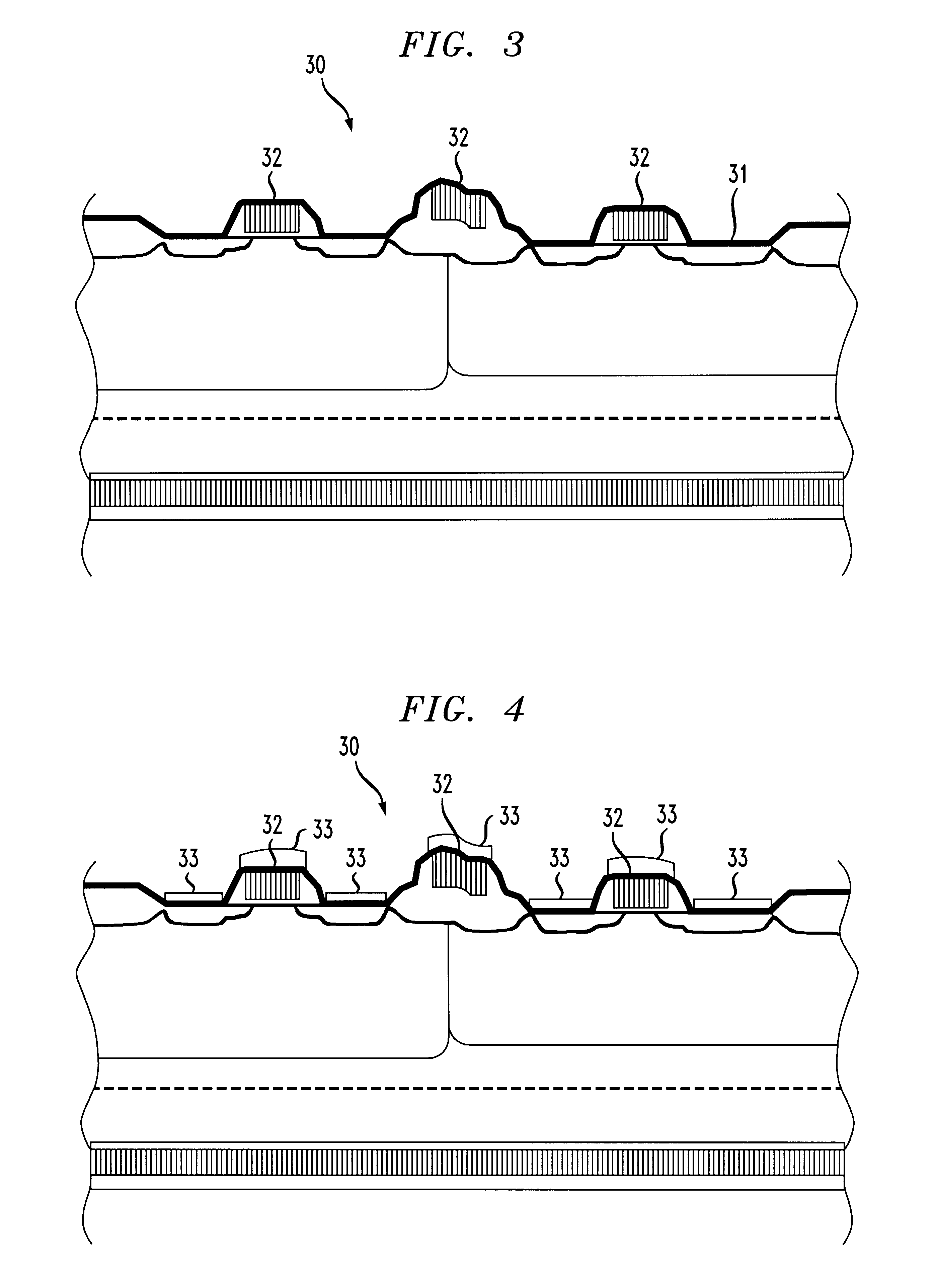Method to selectively heat semiconductor wafers
a technology of selective heating and semiconductor wafers, applied in semiconductor devices, semiconductor/solid-state device details, electrical devices, etc., can solve the problems of inability to selectively heat wafers, easy contamination of wafers,
- Summary
- Abstract
- Description
- Claims
- Application Information
AI Technical Summary
Problems solved by technology
Method used
Image
Examples
Embodiment Construction
In one experiment, the reaction of Ti and Si forming TiSi.sub.2, or self-aligning titanium silicide, was examined. A wafer having exposed surfaces of Si was provided. After deposition of titanium, which is a metal of low emissivity, the titanium was coated with an oxide film of 1000 .ANG.to improve the heat flow. The silicide was selectively formed by a rapid thermal process, in this case, a rapid thermal annealer having a heating lamp and a processing chamber, at a reaction temperature of 650.degree. C. A pyrometer of a closed loop temperature control system sensed an average wafer temperature to control the heating lamp. In this process, the temperature must be comparatively high to achieve complete silicidation on silicon, but as low as possible to avoid any reaction with SiO.sub.2. The amount of TiSi.sub.2 formed with the presence ofthe oxide film indicated a temperature differential of 20.degree. C. which is consistent with the prior set of calculations. Typically, this method ...
PUM
| Property | Measurement | Unit |
|---|---|---|
| temperature | aaaaa | aaaaa |
| temperature | aaaaa | aaaaa |
| emissivity | aaaaa | aaaaa |
Abstract
Description
Claims
Application Information
 Login to View More
Login to View More - R&D
- Intellectual Property
- Life Sciences
- Materials
- Tech Scout
- Unparalleled Data Quality
- Higher Quality Content
- 60% Fewer Hallucinations
Browse by: Latest US Patents, China's latest patents, Technical Efficacy Thesaurus, Application Domain, Technology Topic, Popular Technical Reports.
© 2025 PatSnap. All rights reserved.Legal|Privacy policy|Modern Slavery Act Transparency Statement|Sitemap|About US| Contact US: help@patsnap.com



